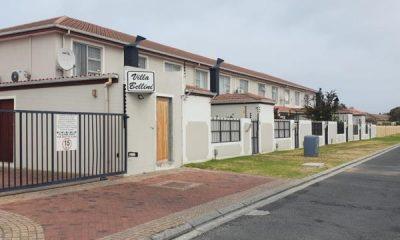411
South African Landlords Face Growing Challenges as Tenant Arrears and Financial Strain Rise

The latest PayProp Rental Index for the fourth quarter of 2024 has revealed early warning signs of growing financial distress among tenants, posing significant challenges for landlords across South Africa. While tenant arrears saw a slight decline by the end of 2024, the data suggests that those still behind on rent are falling deeper into debt, raising concerns about the year ahead.
A Rollercoaster Year for Tenant Arrears
At the end of 2023, only 17.0% of tenants were in arrears—the lowest figure ever recorded by PayProp. However, the start of 2024 brought a surge in arrears, climbing to 18.3% as rental growth slowed. Although the situation improved slightly by the end of the year, with arrears dropping to 17.1%, the average arrears percentage—indicating the proportion of rent owed by tenants in arrears—rose from 74.0% in late 2023 to 77.1% in Q4 2024.
This trend highlights a worrying reality: while fewer tenants are behind on rent, those who are struggling are sinking further into debt. PayProp warns that this could be an early sign of worsening arrears in 2025, particularly if economic conditions remain challenging.
Provincial Performance: A Mixed Picture
The report also shed light on how different provinces are faring. The Western Cape emerged as the best-performing region, with only 13.2% of tenants in arrears—the lowest rate in the country. Tenants in arrears here owed just 60.9% of the average rent, the lowest debt burden nationwide.
North West and Limpopo also showed improvements, with arrears dropping significantly in North West and tenants in Limpopo owing 71.8% of the average rent, below the national average. However, the Free State had the worst tenant arrears situation, with 24.2% of tenants behind on rent and owing 90.4% of the average rent—the highest in the country. Mpumalanga and KwaZulu-Natal also struggled, with nearly 20% of tenants in arrears.
Financial Strain on Tenants
High interest rates and inflation continue to weigh heavily on tenants’ finances. In Q4 2024, tenants spent 44.1% of their income on debt repayments, up from 43.6% a year earlier. Rent also consumed a larger portion of their budgets, rising to 28.7% of income from 28.3% in Q3 2023.
Despite these pressures, the average tenant credit score remained stable at 647 in Q4 2024, consistent with the past two years. While credit score providers like Experian consider this low risk, it still falls short of the minimum risk bracket. PayProp’s Tenant Assessment Report revealed that only 40.8% of tenants were classified as minimum risk in Q4 2024, down from 41.4% a year earlier. Meanwhile, high-risk tenants increased to 25.8%, up from 24.8% in Q4 2023.
What Lies Ahead for Landlords?
The rise in high-risk tenants and the increasing debt burden among those in arrears are clear red flags for landlords. PayProp cautioned that while tenant risk improved slightly in the second half of 2024, the rise in arrears value in Q4 means landlords should remain vigilant in the coming year.
There is a glimmer of hope, however. If interest rates drop in 2025 as expected, it could ease some of the financial pressure on tenants and landlords alike. But for now, the message is clear: landlords must prepare for potential challenges ahead and adopt strategies to mitigate risks in an increasingly uncertain rental market.
Follow Joburg ETC on Facebook, Twitter , TikTok and Instagram
For more News in Johannesburg, visit joburgetc.com

















